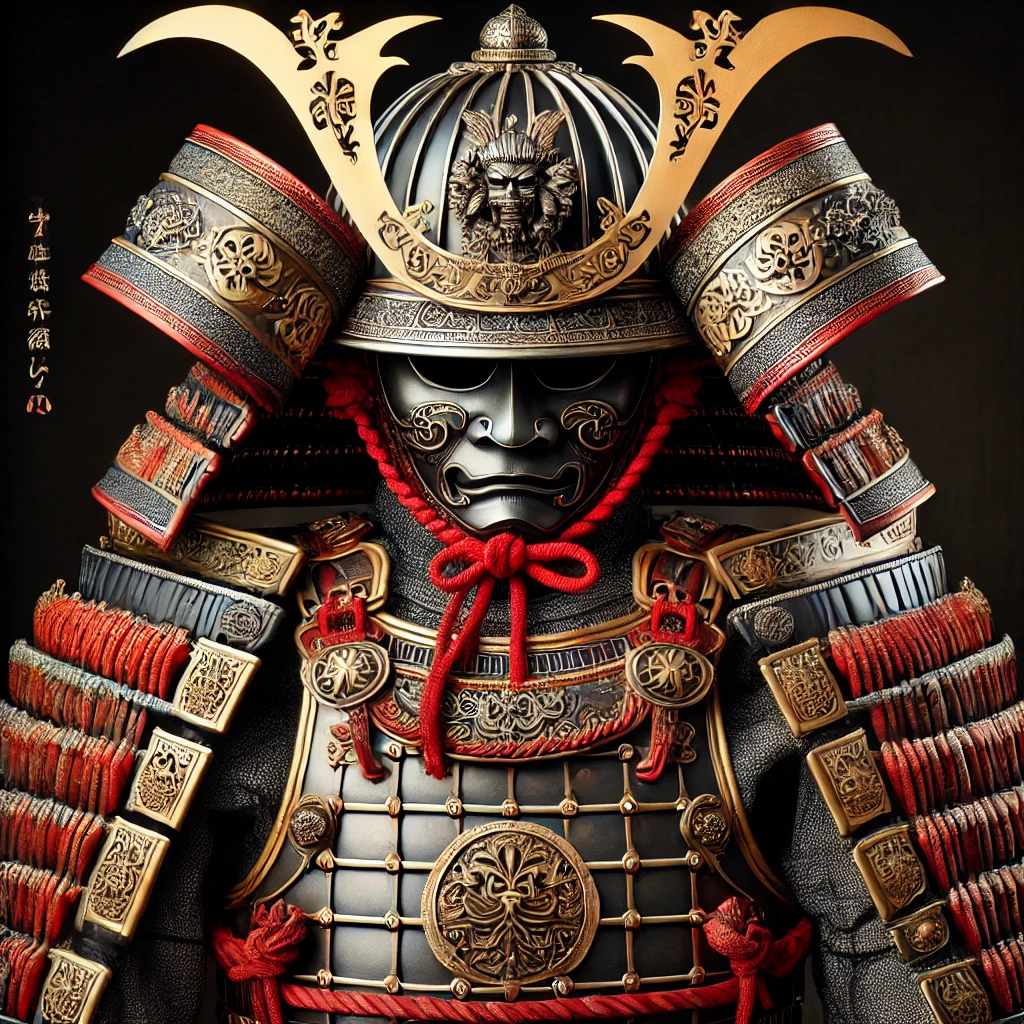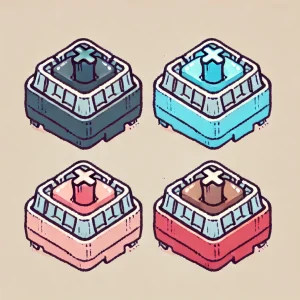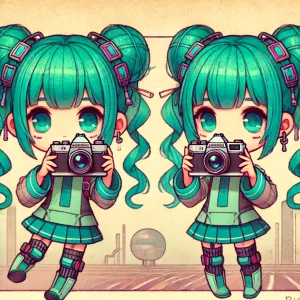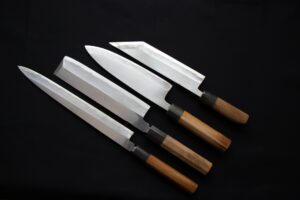
The History and Evolution of Samurai Armor
The history of samurai armor is closely intertwined with Japan’s warrior culture and dates back to ancient Japan. The origins of early armor can be traced to this era, which was relatively simple and primarily suited for combat involving archery. However, as the nature of warfare gradually evolved, with mounted and close combat becoming more prevalent, samurai armor also underwent significant changes.
By the time of the Sengoku period (Warring States period), samurai began wearing armor made of iron plates and helmets adorned with intricate decorations, all of which played a vital role in their survival in battle. The importance of armor can be gleaned from the fact that powerful feudal lords and warlords of this era began to take central stage, giving rise to the name “Sengoku Jidai” or “Warring States period” in Japan. They displayed acts of valor and martial prowess on the battlefield, with armor becoming a symbol of their identity.
However, with the arrival of peace, the role of the samurai changed, and their armor evolved accordingly. During the Edo period, samurai shifted their focus from combat to the protection of their lords and the maintenance of peace. Consequently, armor became more decorative, emphasizing aesthetic value.
The history of samurai armor is deeply intertwined with the spirit and culture of Japanese martial arts, reflecting changes in the roles and values of the samurai class as the ages passed.

Elements and Structure of Samurai Armor
Samurai armor consists of various elements, each contributing to the safety and functionality of the warrior. The helmet (kabuto) protects the head, while the cuirass (do) covers the body, and the forearm and leg guards (kote and suneate) protect the limbs. Additionally, secret weapons such as the concealed blade (shikoro) were often incorporated.
Helmets were crafted from materials like iron and leather, covering part of the samurai’s face. These helmets featured diverse designs, often decorated based on the samurai’s status or family crest, serving as a crucial element for expressing their individuality. Distinctive parts of helmets included the visor, hanging neck guards, and intimidating demon masks, all of which were used as symbols of specific warrior families and daimyo.
The cuirass (do) was constructed from iron plates or small metal scales (kozane), providing comprehensive protection for the entire body. These plates and scales were fastened together with flexible cords and adjusted to fit the samurai’s physique, ensuring the armor’s ability to shield the warrior from enemy attacks and safeguard their life.
Forearm (kote) and leg (suneate) guards were worn to protect the arms and legs. They were typically made of iron and played a vital role in shielding the samurai’s limbs during combat, allowing them to wield weapons effectively.
Samurai also carried secret weapons like the concealed blade (shikoro), which was typically a sword blade hidden within a staff. This versatile weapon allowed the samurai to be prepared for combat even when unarmed.
Samurai armor was designed with a sophisticated structure and elements, all focused on ensuring the warrior’s safety and protection in battle.
Materials and Manufacturing Techniques of Samurai Armor
The crafting of samurai armor required advanced ironworking skills and the expertise of master blacksmiths. The primary material for armor was steel, with specially forged iron plates being commonly used. These iron plates were meticulously manufactured with precise cutting and bending.
In the production of cuirasses, small metal scales known as “kozane” were used, which were linked together with cords to form the armor. These scales were individually crafted and adjusted to fit the samurai’s body. This process was time-consuming and labor-intensive, but it resulted in armor that was both flexible and highly protective.
Helmets were typically made of iron and adorned with various decorations and embellishments. Blacksmiths were well-versed in helmet design and decorations, often incorporating iconic designs representing specific warrior families or daimyo.
Armor manufacturing was carried out by skilled blacksmiths, and these skills were often passed down through generations. The production process was highly intricate, requiring advanced knowledge and techniques. Manufacturing took place within households, with blacksmith families preserving traditional skills and passing them on to the next generation.
Moreover, the design and decoration of armor also demanded time and effort. Family crests and emblems were incorporated into the armor and helmets, symbolizing specific warrior families or lineages. In this way, armor production was a delicate fusion of technical skill and artistic sensibility, reflecting samurai culture and pride.
Uses and Roles of Samurai Armor
Samurai armor served various purposes and roles beyond the battlefield. Its most evident role was defense during combat. Armor was designed to protect the samurai’s body and safeguard their life from enemy attacks. Wearing armor, including the cuirass and helmet, was essential for survival in the fierce battles and conflicts of the Warring States period.
On the other hand, samurai armor played a significant role in martial arts training. Warriors practiced various forms of martial arts such as unarmed combat and swordsmanship to hone their skills. Armor was used in the training for these martial arts, aiding in both offensive and defensive techniques.
Armor also served as a symbol of formality and prestige. Samurai donned their armor in official settings, maintaining their dignity in front of their lords and fellow warriors. In such contexts, armor was a crucial element in showcasing the samurai’s social status and family lineage.
Samurai armor symbolized the spirit of the samurai, embodying the ideals of the Bushido, not only in combat and martial arts but also in social situations. Its role and significance are deeply rooted in the core of Japanese warrior culture.
Famous Samurai Armor and Their Stories
Samurai armor includes many sets associated with renowned warlords and warriors. These suits of armor reflect their valor and individuality, preserving their unique stories.
For instance, Miyamoto Musashi is one of Japan’s most famous swordsmen, and his armor symbolizes his martial prowess and simplicity. His armor is unadorned, lacking the flashy decorations seen on other sets. This reflects his straightforward nature and his mastery of the sword.
The armor of Sanada Yukimura is also well-known. He is celebrated for his actions during the Battle of Sekigahara, and his armor serves as a tribute to his cries and struggles during the Warring States period. Sanada’s armor features distinctive red tones and crane decorations, signifying his connection to his family.
Famous suits of armor are appealing to history enthusiasts and collectors as they convey the stories of these warriors. These armors physically convey the virtues, ethics, and narratives associated with a samurai’s valor, morality, and life, making them an integral part of Japan’s historical heritage.
Cultural Significance of Samurai Armor
Samurai armor carries cultural significance as an iconic element of Japan’s bushido spirit and aesthetics. These armors go beyond being mere protective gear; they symbolize the essence of the samurai, expressing their ethics, loyalty, and virtues in physical form.
Samurai upheld virtues like courage, loyalty, honor, and sincerity. Armor materialized these virtues, serving as a means for samurai to demonstrate their loyalty to themselves, their lords, families, and the nation. Notably, the family crests and emblems on the cuirass and helmet indicated a samurai’s lineage and affiliation, symbolizing their pride and identity.
In the ornamentation of samurai armor, aesthetic elements were emphasized. Metalwork and engravings added artistic value to the armor, reflecting the samurai’s sense of beauty and refinement. The armor’s design embodied its unique culture and aesthetics, recognized as part of Japan’s bushido culture.
Samurai armor is an embodiment of Japan’s bushido spirit and ethical values, and its cultural significance continues to resonate with many people today. Respected as a historical legacy, samurai armor holds an important place in Japanese culture.
Value and Collection of Samurai Armor
Samurai armor is highly attractive to collectors and enthusiasts due to its historical significance and aesthetic appeal. These suits of armor symbolize the way of the samurai and reflect Japan’s history and culture. As a result, authentic samurai armor holds significant value and is highly regarded in the world of collecting.
The value of samurai armor varies depending on factors such as its historical background, manufacturing period, maker, condition, and other considerations. Older armor and those associated with specific warlords generally command high value. Additionally, well-preserved armor with original decorations and family crests intact holds even greater value.
In the realm of collections, samurai armor is cherished as a way to pay respect and homage to the bushido spirit and Japan’s history. Many collectors own and display these suits of armor, playing a role in honoring the spirit of the samurai and passing it on to future generations.
Moreover, there is a strong demand for samurai armor in the market. Collectors, museums, history enthusiasts, and practitioners of martial arts compete to acquire these suits of armor. Due to this demand and their rarity, the prices of samurai armor have surged, elevating their value as collectibles.
Legacy of Samurai Armor to the Modern Day
Samurai armor carries the legacy of Japan’s bushido culture and aesthetics into the modern era. While the era of combat is in the past, samurai armor continues to preserve its historical and cultural significance in contemporary times.
Today, samurai armor is valued as a vital artifact showcased in museums and art galleries, introducing Japan’s history and culture. Many tourists and history enthusiasts visit these exhibitions to gain insight into the bushido spirit underlying these suits of armor.
Furthermore, samurai armor serves as a source of inspiration in various media, including movies, comics, and art. It spreads Japanese culture worldwide and emphasizes Japan’s historical heritage.
Martial arts training also persists in the modern day, with samurai armor being a part of these practices. Martial arts are not only embraced as a form of fitness but also for their role in spiritual growth. Samurai armor continues to carry its historical value in martial arts practice, passing on the spirit of bushido to the current generation.
Samurai armor maintains its heritage and cultural importance in the modern day, cherished by many who hold deep respect for Japan’s history and values.
Acquiring Samurai Armor: Buying Guide
Samurai armor, with its historical significance and aesthetic appeal, is a desirable item for many people to own. To acquire samurai armor, there are several factors to consider.
1. Clarify Your Purpose and Use:
Before purchasing samurai armor, it’s essential to clarify your intended use. Are you acquiring it as part of a collection, for practical use in martial arts, or for display? The type and price range will vary depending on your purpose.
2. Authentic or Replica
When buying samurai armor, decide whether you want an authentic piece or a replica. Authentic samurai armor can be expensive and challenging to obtain, but it carries high historical value. On the other hand, replicas are more reasonably priced and suitable for display or martial arts practice.
3. Choose Your Source
Select where you want to purchase samurai armor. Options include reputable martial arts stores, antique shops, or online auction sites. When choosing a source, check for their reputation, reliability, and return policies.
4. Inspect Material and Condition
Examine the material and condition of the armor. For authentic armor, it should be made of iron, and check for rust or damage. Even for replicas, opt for high-quality materials.
5. Size Selection
Proper sizing is crucial for samurai armor. Ill-fitting armor can cause issues during use or display. Measure your body dimensions and choose armor of the appropriate size.
6. Set a Budget
Samurai armor prices vary widely, so it’s essential to set a budget. Determine how much you’re willing to spend and choose the type and source accordingly. Authentic armor is expensive, while replicas are more budget-friendly.
7. Maintenance and Storage
Once you acquire samurai armor, learn about proper maintenance and storage. Armor requires special care, and storing it correctly and performing maintenance is essential for ensuring its longevity.
The process of acquiring samurai armor requires careful planning and consideration. Samurai armor symbolizes Japanese history and culture, and understanding and respecting its value is crucial.
Experiencing the Samurai Spirit: Wearing Armor and Practicing Martial Arts
For many, owning samurai armor is not just about possession; it’s an adventure to experience the soul of the samurai by wearing it and engaging in the practice of martial arts. Here, we explore the experience of wearing armor and embracing martial arts.
Experience of Wearing Armor
Wearing samurai armor is a way to show deep respect for history and culture. By donning the armor, you can connect with the spirit of the samurai and feel the essence of bushido. When you wear the armor, you experience its weight, constraints, and, importantly, the identity of a warrior.
The experience of wearing armor is sometimes offered at martial arts dojos or historical reenactment events. With guidance from knowledgeable instructors or martial arts masters, you can put on the armor and learn traditional martial arts techniques. This experience allows you to delve into the allure and ethics of the samurai, creating a sensation akin to time travel.
Practice of Martial Arts
Owning and wearing samurai armor can serve as a strong motivator to pursue the practice of martial arts. Martial arts are a path of physical fitness, skill development, and spiritual growth, with the armor being an integral part of it. Through martial arts, you can cultivate the spirit of the samurai, endurance, and sincerity.
Martial arts enhance physical attributes such as body coordination, flexibility, and mental focus. Additionally, they emphasize the respect for the virtues and ethics of a warrior, instilling respect and courtesy toward others. Martial arts are not just about combat techniques; they are highly regarded as a form of spiritual discipline.
The experience of wearing armor and the practice of martial arts are captivating adventures for many, serving as a means to pursue the essence and spirit of the samurai. These experiences allow you to appreciate the values of bushido, feel Japanese culture and history, and display respect for both.
Conclusion: Rediscovering the Allure of Samurai Armor
Samurai armor is a captivating entity for many due to its historical, aesthetic, cultural significance, and its role as a symbol of bushido. These armors reflect Japanese history and culture, carrying their value into the modern era. Samurai armor offers an opportunity to experience, respect, and cherish the spirit of bushido.
Touching samurai armor and rediscovering its allure is a wonderful way to pay homage to Japanese bushido culture and engage with its history. Armor symbolizes the samurai’s spirit and is a part of safeguarding their heritage. Acquire samurai armor and rediscover its allure.
Reference Information
View Authentic Samurai Armor
The following facilities host permanent exhibitions of samurai armor, allowing you to see the armor worn by Japanese samurai up close. When visiting Japan, consider paying them a visit. For detailed information, please visit the official websites of each facility.
Tokyo National Museum: 13-9 Uenokoen, Taito-ku, Tokyo
The Japanese Sword Museum (Touken World): 1-12-9 Yokomachi, Sumida-ku, Tokyo
Nagoya Castle: 1-1 Hommaru, Naka-ku, Nagoya, Aichi Prefecture
Kunozan Toshogu Shrine Museum: 390 Negoya, Suruga-ku, Shizuoka City, Shizuoka Prefecture
Contemporary Samurai Armor Workshop
At the Marubu Industries Samurai Armor Workshop, they uphold traditional craftsmanship techniques in the modern era, and they also offer custom-made samurai armor.
Marubu Industries Samurai Armor Workshop | Kagoshima Prefecture








